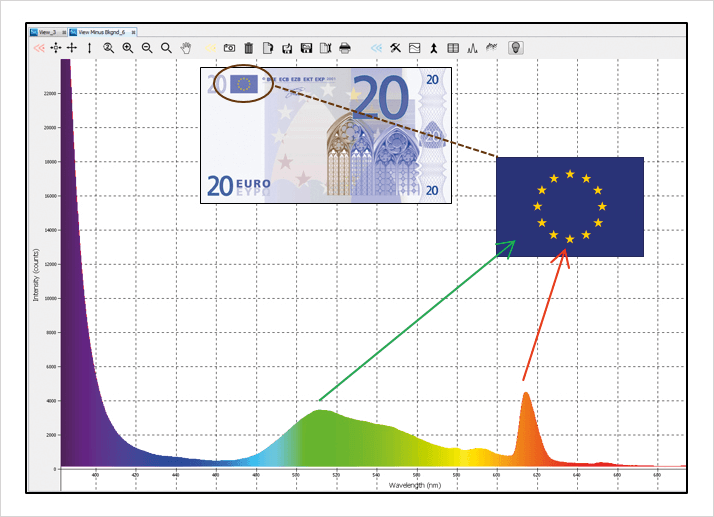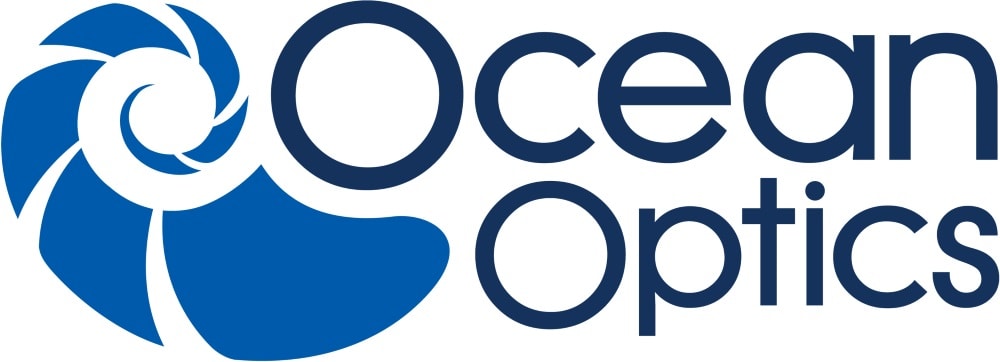Inks and pigments with optically unique properties can provide quick visual verification of authenticity, and can be difficult to replicate. These range from iridescent or color-shifting inks containing tiny flakes of mica that cause a change in color with viewing angle to inks that are poorly read by the illumination sources in traditional scanners used for copying. Fluorescent inks are often used to overlay documents with special words or images that appear only when illuminated by UV light or light of another specific wavelength. Fluorescent pigments may also appear as fibers incorporated into the paper itself.

To test this, we assembled an Ocean Optics spectrometer system to look at fluorescence from the European Union flag security feature on a 20 Euro note. When viewed with UV light, fluorescence from the security feature should cause the blue background on the flag to appear green, while the yellow stars should appear orange (Figure 1).

We configured a modular fluorescence system consisting of a reflection probe, a 385 nm LED for excitation and a high sensitivity spectrometer for detection. With the probe pointed at the flag, a broad fluorescence peak was observed from ~490-560 nm, corresponding to the expected green color for the background when viewed with UV light. Fluorescence from the stars was visible in the same spectrum as a strong peak from 610-620 nm.
Results:
While a counterfeit bill might be able to replicate some Euro security features accurately enough to fool the eye at a glance, a full spectral measurement compared against an authentic Euro fluorescence spectrum could very quickly discern a fake.Conclusions:
Optical security features and analysis techniques are an increasing part of safeguarding and evaluating document security. Compact spectroscopy systems are an important part of every step in the authentication process, from development to analysis in the field. Ocean Optics technologies can be adapted for integration into robust analysis systems and complemented by user-friendly pass/fail software to help professionals in this burgeoning field that protects our economic systems, our possessions and even our identities.References
- Optical Document Security. Optical Document Security, n.d. Web. 21 July 2015.





